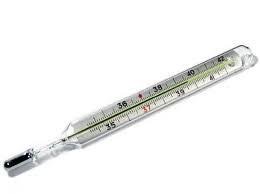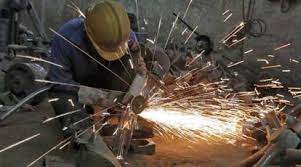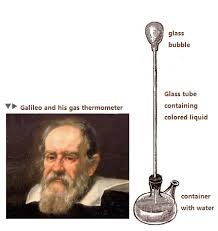Inventor of the Thermometer: A Historical Insight
Introduction to the Thermometer’s Invention
The invention of the thermometer marked a significant milestone in scientific history, revolutionizing the way we measure temperature. The earliest known thermometer was developed in the early 17th century, and its evolution has played a crucial role in various scientific and medical advancements.
Who Invented the Thermometer?
The thermometer’s invention is attributed to Galileo Galilei, a renowned Italian physicist and astronomer. In the late 1500s, Galileo designed an early form of the thermometer known as the thermoscope. Although not precise by modern standards, Galileo’s thermoscope was a crucial step in understanding temperature variations. Later, in 1714, Daniel Gabriel Fahrenheit improved upon Galileo’s design by inventing the mercury thermometer, which provided more accurate temperature readings and became widely used.
Impact and Evolution
The development of the thermometer has had a profound impact on science and medicine. In its early days, thermometers were primarily used in scientific experiments. Over time, they became essential tools in medicine, allowing for the accurate measurement of body temperature, which is crucial in diagnosing and treating illnesses.
Fahrenheit’s innovation also led to the establishment of standardized temperature scales, making it easier to communicate and compare temperature readings across different regions and scientific disciplines. Today, thermometers come in various forms, including digital and infrared, each offering specific advantages for medical, scientific, and everyday use.
Modern Applications
In contemporary settings, thermometers are indispensable in various fields, including healthcare, meteorology, and manufacturing. They are used to monitor patient health, predict weather patterns, and ensure the quality of products in industrial processes. The advancement in thermometer technology continues to enhance accuracy and convenience in measuring temperature.

Why This News is Important
Significance in Scientific History
Understanding the origins and development of the thermometer provides valuable insights into the progression of scientific knowledge. Galileo’s initial design paved the way for future innovations, reflecting the dynamic nature of scientific discovery and technological advancement. This historical context is crucial for students, as it highlights the evolution of scientific tools that have fundamentally shaped modern science.
Relevance to Modern Science and Medicine
The thermometer’s invention has a direct impact on various fields, particularly medicine and science. Accurate temperature measurement is vital in diagnosing diseases, monitoring patient health, and conducting scientific research. By studying the history and evolution of the thermometer, students gain a deeper appreciation for the tools used in their respective fields of study.
Foundation for Further Innovations
The advancements in thermometer technology have led to the development of more sophisticated instruments, which continue to influence contemporary scientific practices. Knowledge of the thermometer’s history underscores the importance of ongoing innovation and improvement in scientific tools, inspiring future advancements in technology.
Historical Context:
Early Developments
The concept of measuring temperature can be traced back to ancient civilizations, but the modern thermometer began taking shape in the 16th and 17th centuries. Galileo Galilei’s initial design, the thermoscope, was a rudimentary device that demonstrated the principle of temperature variation but lacked precision.
Daniel Gabriel Fahrenheit’s Contribution
The significant leap in thermometer technology came with Daniel Gabriel Fahrenheit’s invention of the mercury thermometer in 1714. Fahrenheit’s design improved accuracy and consistency in temperature measurements, which was a substantial advancement over previous designs.
Evolution and Impact
Since Fahrenheit’s improvements, thermometers have evolved significantly. The introduction of digital and infrared thermometers has further enhanced accuracy and ease of use, reflecting ongoing advancements in technology and scientific understanding. The thermometer’s journey from Galileo’s thermoscope to modern digital devices illustrates the continuous nature of scientific progress.
Key Takeaways from “Inventor of the Thermometer”
| Serial Number | Key Takeaway |
|---|---|
| 1 | Galileo Galilei invented the early thermoscope, marking the beginning of temperature measurement. |
| 2 | Daniel Gabriel Fahrenheit improved the design with the mercury thermometer, providing greater accuracy. |
| 3 | The development of standardized temperature scales facilitated global scientific communication. |
| 4 | Modern thermometers, including digital and infrared types, have advanced accuracy and applications. |
| 5 | The evolution of the thermometer reflects ongoing scientific innovation and its impact on various fields. |
Important FAQs for Students from this News
1. Who is credited with inventing the earliest form of the thermometer?
Galileo Galilei is credited with inventing the early form of the thermometer known as the thermoscope in the late 1500s.
2. What significant improvement did Daniel Gabriel Fahrenheit make to the thermometer?
Daniel Gabriel Fahrenheit improved the thermometer by inventing the mercury thermometer in 1714, which offered greater accuracy in temperature measurement.
3. How has the thermometer evolved over time?
The thermometer has evolved from Galileo’s rudimentary thermoscope to sophisticated digital and infrared devices, enhancing accuracy and broadening applications in various fields.
4. Why is the thermometer important in modern science and medicine?
The thermometer is crucial for accurate temperature measurement, which is essential for diagnosing diseases, monitoring patient health, and conducting scientific research.
5. What are some modern applications of thermometers?
Modern applications of thermometers include healthcare, weather forecasting, and quality control in manufacturing processes.
Some Important Current Affairs Links

















